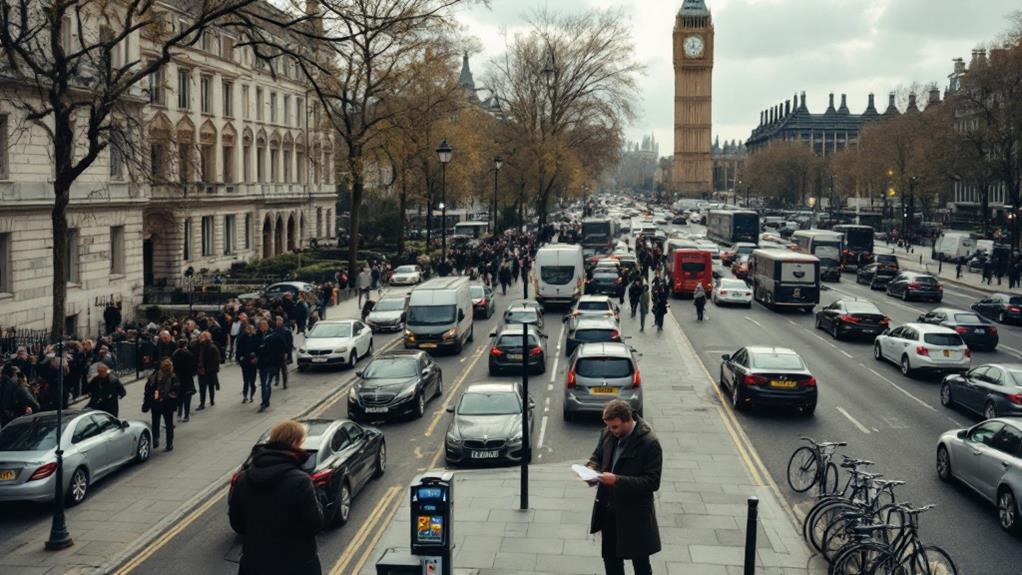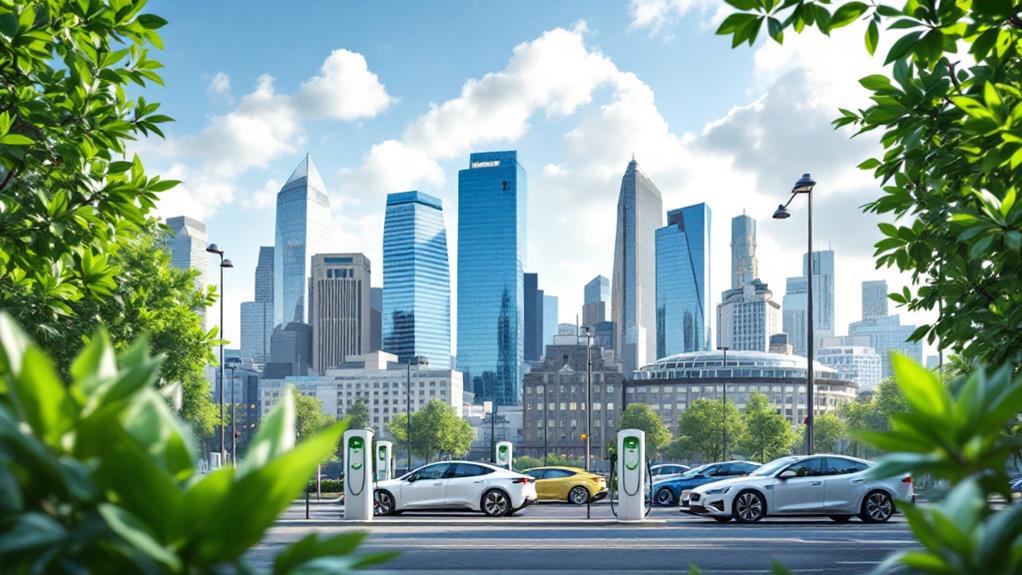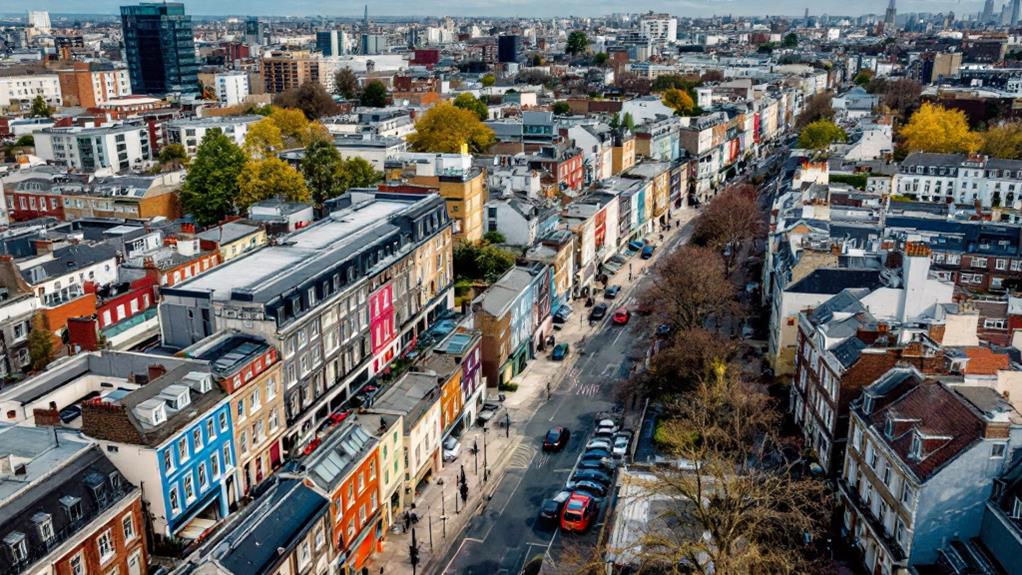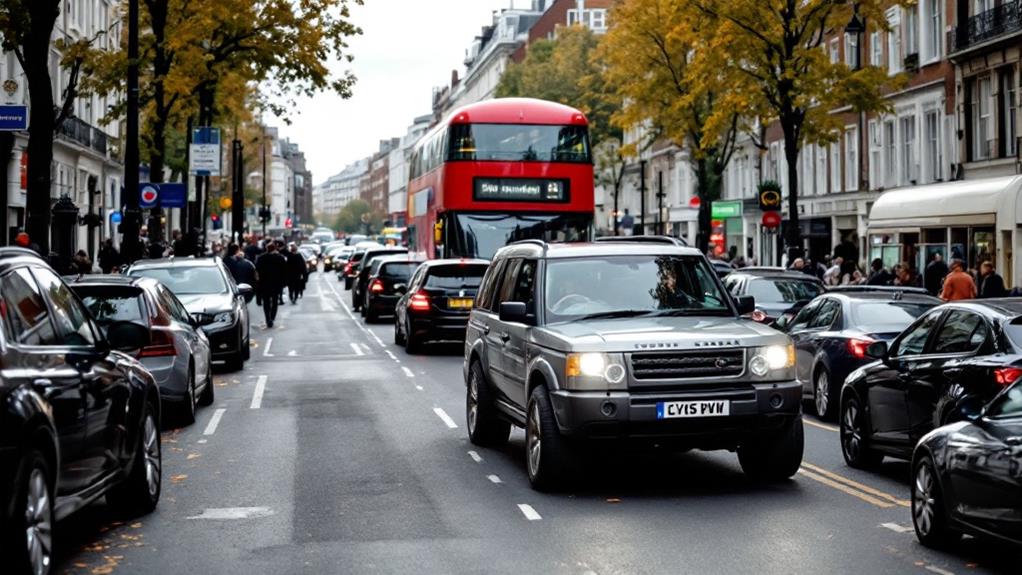Navigating London's Congestion Charge and Its Impact on Parking

London's Congestion Charge Zone affects both driving and parking in central London. You'll need to pay a daily fee of £15 if you enter the zone during operational hours. Parking within the zone can be expensive, but residents get a 90% discount on the charge. Consider park-and-ride facilities outside the boundary or alternative transportation methods like cycling or public transit. Apps and technology can help you find available parking spaces and manage payments. When deciding between paying for parking or the Congestion Charge, factor in the length of your stay and any additional charges like the Ultra Low Emission Zone fee. The city's parking setting is transforming, with new trends shaping future options.
Understanding the Congestion Charge Zone
If you're planning to drive in central London, you'll need to familiarize yourself with the Congestion Charge Zone. This area covers the heart of the city, stretching from Kings Cross to Vauxhall and Paddington to Whitechapel. As you approach the zone, you'll see clear signage indicating entry points.
The Congestion Charge Zone operates from 7am to 6pm on weekdays and 12pm to 6pm on weekends and bank holidays. It's essential to pay the charge if you're entering during these hours. Transport for London (TfL) manages the system using Automatic Number Plate Recognition cameras to enforce the rules.
If you forget to pay within three days, you'll receive a Penalty Charge Notice. The penalties increase if you don't pay promptly or if your challenge is unsuccessful. Please note that the Congestion Charge is separate from the Ultra Low Emission Zone and Low Emission Zone charges.
Parking Strategies Within Charged Areas
How can you traverse parking within London's Congestion Charge zone without breaking the bank? The key is to plan ahead and investigate your options. If you're a resident within the Congestion Charge Zone, you're eligible for a 90% discount on the charge itself, but you'll still face standard parking fees. These can be steep, with higher hourly rates and limited free on-street spaces.
For those commuting into the zone, consider park-and-ride facilities outside the boundary. These offer a cost-effective alternative, allowing you to avoid the Congestion Charge while providing access to public transport into central London. If you're employed within the zone, check with your company about workplace policies that might help. Some businesses offer parking subsidies or allowances to offset the additional costs for employees.
Flexible work arrangements can also be a transformative factor. If your employer allows remote work or off-peak commuting, you can sidestep both the Congestion Charge and high parking costs. By adjusting your schedule or working from home when possible, you'll save money and reduce stress associated with maneuvering London's busy streets during peak hours.
Alternative Transportation and Park-and-Ride Options
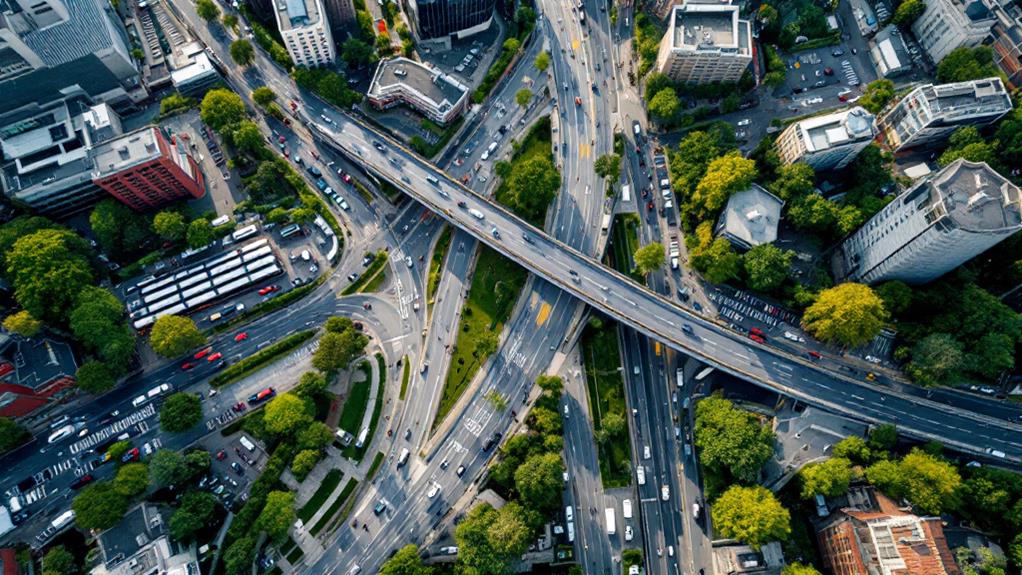
London's Congestion Charge zone doesn't have to be a barrier for commuters and visitors. You've got several alternative options to traverse the city without incurring the charge. Park-and-ride facilities outside the zone offer a convenient solution. You can leave your car at these sites and complete your expedition using public transport. Transport for London operates multiple park-and-ride locations with direct connections to central London.
If you're an Oyster card holder or you've paid the Congestion Charge, you'll benefit from discounted park-and-ride rates. Cycling to the nearest Underground or train station is another popular choice for avoiding the charge while staying active. For those preferring not to drive at all, London's increased investment in bus, rail, and bike-sharing services provides viable alternatives within the Congestion Charge Zone.
These options not only help you avoid the charge but also contribute to reducing traffic congestion and improving air quality in central London. By utilizing these alternative transportation methods, you can efficiently traverse the city while potentially saving money and reducing your environmental impact.
Cost Comparison: Parking vs. Charge
Frequently, drivers face a cost dilemma when entering central London: pay for parking or incur the Congestion Charge. At £15 per day, the congestion charge often exceeds hourly parking rates, which range from £2 to £10. However, you'll need to ponder your planned duration in the zone.
If you're staying for just a few hours, parking might be more economical. But for longer visits, the Congestion Charge could be the superior option, as it covers the entire day from 7am to 6pm. Residents within the zone benefit from a 90% discount, making the charge more alluring.
Electric vehicle owners should weigh their options carefully. While exempt from the congestion charge, you might find discounted parking rates at some facilities. Don't forget the additional Ultra Low Emission Zone (ULEZ) charge of £12.50 for non-compliant vehicles, which can dramatically impact your decision.
Technology Solutions for Efficient Parking
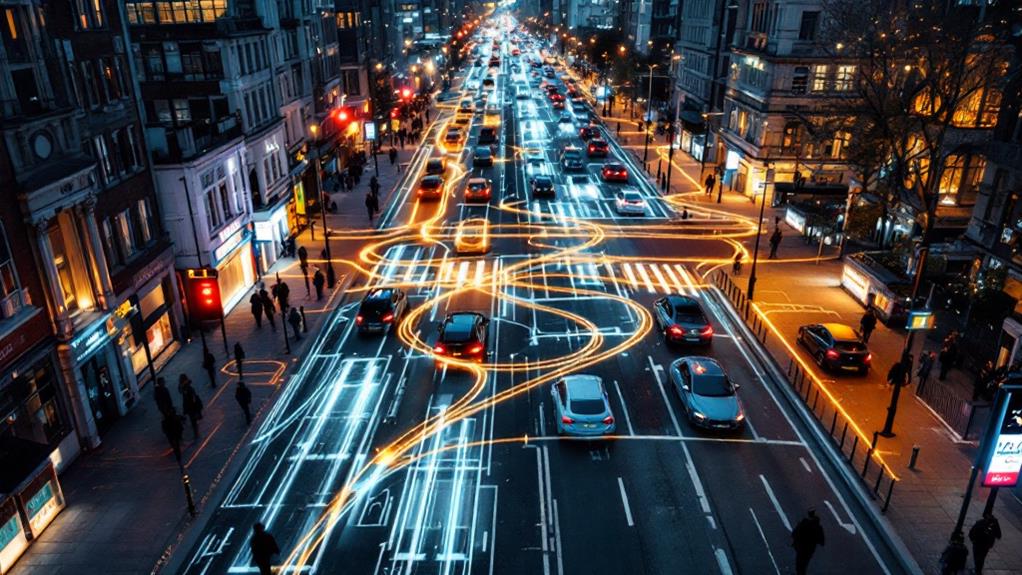
While cost considerations are important, technology is revolutionizing how drivers traverse London's parking terrain. As you maneuver the city's Congestion Charge zone, you'll find an array of tech solutions to streamline your parking experience.
Apps like ParkMe and JustPark offer real-time parking availability and mobile payment options, making it easier to find and pay for spots. These apps can help you locate parking areas where you're exempt from paying the Congestion Charge, saving you money. Integrated parking guidance systems use sensors and digital signs to direct you to available spaces, reducing your search time and emissions.
Transport for London (TfL) has implemented predictive algorithms to forecast parking demand and prices, enabling flexible pricing models. This encourages you to park in underutilized areas, potentially outside the Congestion Charge zone. ANPR technology allows for automated enforcement and payment, eliminating the need to pay by midnight or risk a penalty.
If you frequently drive in London, consider setting up auto pay for the Congestion Charge. This system automatically deducts the daily charge, ensuring you never forget to pay and avoiding fines.
Future Trends in London Parking
Innovation is reshaping London's parking terrain as the city grapples with expanding Congestion Charge zones and changing urban mobility needs. As you navigate the New Low Emission Zone (ULEZ) and pay in advance to reduce traffic, you'll notice a shift in parking strategies. Evolving pricing models are becoming more prevalent, adapting to real-time demand and helping balance short-term and long-term parking needs.
You'll encounter increasingly sophisticated curbside management techniques as London optimizes its limited street space. Expect to see:
- Time-of-day restrictions
- Dedicated loading/unloading zones
- Smart sensors for real-time availability updates
Data analytics are revolutionizing parking policies, enabling more equitable and efficient use of space. As you plan your trips, you'll benefit from mobile apps providing real-time observations on parking availability and pricing.
The future of London parking is electric and autonomous. You'll find more charging stations in parking facilities, and may soon experience automated valet parking. As the charge to drive in central London continues to evolve, parking operators are adapting to changing commuter habits, exploring ways to repurpose underused spaces and cater to the growing demand for micromobility options.
